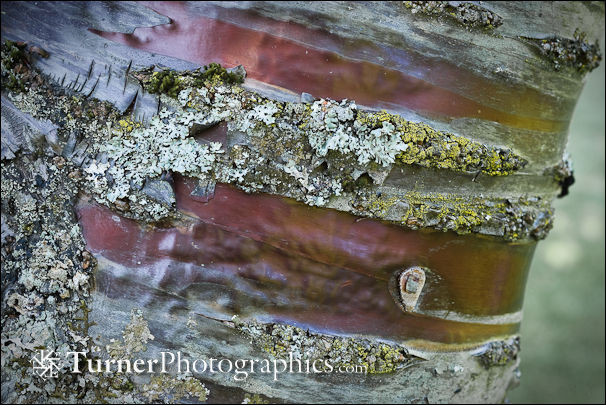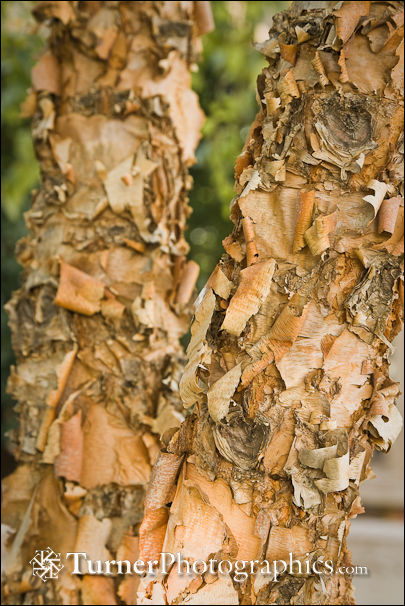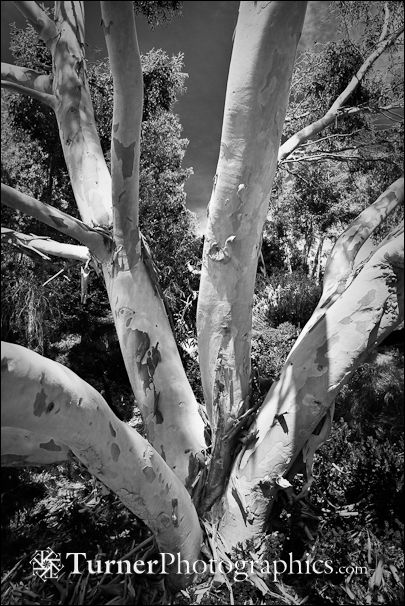Garden Bark

There’s still not a lot blooming, neither native nor cultivated, so I’ll continue on the theme of bark. It’s something I tend to notice more in the winter than the summer, although none of these photos are truly winter images.
The detail of peeling flowering cherry bark with a nice collection of lichens was growing along Azalea Way at the Washington Park Arboretum in Seattle. I don’t know the variety of cherry, nor the names of the lichens. Several of the trees and shrubs harbor lichens and mosses. They thrive in our wet winters.
 Some of the most interesting bark peels dramatically, like this river birch (Betula nigra) growing in the garden at Oklahoma State University in Oklahoma City.
Some of the most interesting bark peels dramatically, like this river birch (Betula nigra) growing in the garden at Oklahoma State University in Oklahoma City.
River birch is native to most of the eastern United States, including Oklahoma. It thrives in wet habitats in the wild, but in cultivation will tolerate drier conditions. I’ve read at least one report that Native Americans boiled the sap into a syrup, similar to maple syrup, and on occasion used the inner bark as an emergency survival food. I’ve never tried either, and have some difficulty imagining eating bark. But I’ve never been that hungry.
Many of our birches have interesting bark. Probably one of the most recognizable North American trees is paper birch (Betula papyrifera), known in most of its range for bright white bark that peels in horizontal strips. It is native all across the northern United States and almost all of Canada. West of the Cascades where I live you often find it with darker, less dramatic bark that makes it more difficult to recognize.
 Trees with interesting bark aren’t just limited to North American natives. This Tasmanian Snowgum (Eucalyptus coccifera), was planted as a dramatic ornamental in the alpine garden at the University of British Columbia Botanical Garden.
Trees with interesting bark aren’t just limited to North American natives. This Tasmanian Snowgum (Eucalyptus coccifera), was planted as a dramatic ornamental in the alpine garden at the University of British Columbia Botanical Garden.
I photographed the snowgum in color, and this photo has appeared in print in its original form. This version was converted to black and white in Adobe Lightroom, which gives all the control over black and white that a film photographer had with a complete set of filters. Actually, Lightroom gives even more control than we had with filters and film because one can adjust each of the additive and subtractive primary colors individually. Thus, I could render the blue sky dark like a polarizer would, darken the green foliage, and brighten all the reds and yellows.
Photography is a combination of art and craft, creative decisions and science. It helps to know a little of each. The craft and science are the underpinnings that allow creative realization. The best ideas have little value if they can’t be rendered into a sharable form.


The lichens on the top photo are mostly crustose (flat to the surface), which I never learned to identify, but the yellow one might well be a young Xanthoria, which is a very small foliose lichen. Take a lens to it next time you see a yellow, or orange one on a hardwood tree (or a rock). They are exquisite!